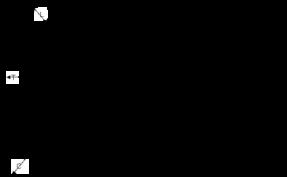
NavList:
A Community Devoted to the Preservation and Practice of Celestial Navigation and Other Methods of Traditional Wayfinding
From: Peter Fogg
Date: 2007 Mar 17, 18:24 +1100
Thinking about Lehmann's Rules, as used by land surveyors, has reminded me of one of the better coastal navigation courses that I have come across.
What it reminded me of in particular was a method of plotting a fix from landmarks along the visible stretch of coast that the vessel was off.
Now; the standard method is to measure the magnetic bearing from the vessel to the feature with a compass, correct for variation and deviation, then plot a position line backwards from the tower or lighthouse towards the sea and the vessel's position. In essence there is no difference between such resulting LOPs and those derived from celestial bodies. At least two, ideally with well separated azimuths, are required to form a fix. With three, inevitably a triangle results, the centre of which is adopted as the fix. Same old same same.
What this coastal nav course proposed was taking the same three corrected bearings but plotting from the fix position onto clear material from a point on the plastic sheet representing the side opposite to the land the seaward side. So three position lines radiating outwards.
Then placing this clear sheet upon the chart and adjusting it until all three position lines are placed over the features they point towards and beyond. You can immediately see the advantage there is no ambiguity about the fix as the triangle proposes; the fix is a point.
This can then be pricked (gently) with one arm of the dividers and a very precise fix has been transferred to the chart.
You'll notice I wrote fix, not position. Although it is certainly precise it is not necessarily any more accurate, I should imagine, than adopting the centre of a triangle.
Just like that centre, this pin-prick is an approximation of the position. I guess we could anguish about its ambiguity although such an argument must necessarily be made with a point rather than the three position lines that seem to encourage all this polemic.
The other feature of a coast is that it, almost always, proposes a gamut of possible features to use for plotting that cover less than 180 degrees.
So according to the rules regarding the resolution of systematic error, the position will always be outside the triangle and located on the seaward side of the fix if systematic error be present.
In practice this coastal fix (as celestial) may be subject to both systematic and random error. Both could be addressed with the appropriate tools, eg; analysis of multiple sights, calculation of the standard deviation of those observations, etc, although you have to wonder why you would bother (at this point I might make clear that the triangle above has been made much too large for purposes of clarity only).
Again, the pin-prick tends to deflect rather adroitly any passion for correction or worry about the ambiguity of a triangle, although both are approximations. The pin-prick encourages a presumption of accuracy although this is possibly misleading.
Where this sort of analysis really comes into its own, for our purposes, are those navigators of their porch who are really interested in just how accurate a position they can establish just as these techniques for analysis and correction are of more practical use to land surveyors than navigators of yachts, or other moving vessels.
Post scriptum:
For any who may be interested in such trivia, these diagrams represent
so poorly! a coast I am fairly familiar with. C is Centrepoint
Tower, the tallest building in the Sydney CBD (downtown), well within Port
Jackson (Sydney Harbour), about 15kms from the coast but clearly visible for a
long way out to sea, up and down the coast. T represents the Ba'hia
Temple about 5kms from the coast; but as this white dome is located on a
conspicuous high point amidst grey-green hills it proves very useful for nav. L
is Barrenjoey Lighthouse, found on top of a cliff that marks the most northern
point of Sydney and the southern entrance to the Hawkesbury River, known as
Broken Bay. So named, like many features along this coast, by as he
then was Lieutenant James Cook.
--~--~---------~--~----~------------~-------~--~----~
To post to this group, send email to NavList@fer3.com
To , send email to NavList-@fer3.com
-~----------~----~----~----~------~----~------~--~---








